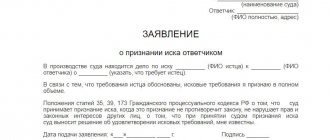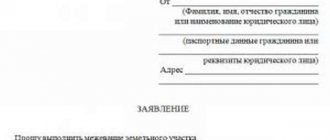Going to court involves not only resolving a dispute between the parties, but also enforcing a court decision.
And it is precisely at this point that a “good” decision can “break” against reality. Because the fact of execution of the decision depends on many factors. This is the crux of the matter and who the debtor is. It also depends on the actions of the parties at the stage of enforcement proceedings. Why is this happening? What influences the feasibility of decisions? How to execute a court decision in a short time? Information about all this is below. Additional questions can be asked to the site’s duty lawyer.
Depending on the category of the case and the passage of the appeal stage, the timing of execution of the court decision will vary. However, the legislator established a uniform procedure. The court decision can be executed by the defendant (debtor) himself voluntarily. And if this does not happen, enforcement is possible with the help of a specially authorized authority.
Execution of a court decision: predicting the timing
The court's decision on the case is announced after the judge has retired to the deliberation room. But it’s almost never handed out right away. The court is obliged, within 5 days (and according to Article 107 of the Code of Civil Procedure of the Russian Federation - working days) after the announcement, to hand over to the parties copies of the decision in full in writing. To do this (if the persons involved in the case were at the court hearing) you will have to visit the courthouse again.
Please note that in some cases you will have to draw up an application for a reasoned decision. If the case was considered by a magistrate, as well as a district judge in a simplified manner.
In cases expressly provided for in Art. 211 of the Code of Civil Procedure of the Russian Federation (on the collection of alimony, on reinstatement at work, etc.), or at the request of the plaintiff, the execution of the court decision can begin immediately. The interested person submits a corresponding application for immediate execution of the decision to the court or before the decision is made. The plaintiff must provide evidence in a civil case that waiting for the decision to enter into legal force will cause him significant damage or execution will be impossible. Bringing a court decision to immediate execution is the right, but not the obligation of the court.
In all other cases, the court decision will enter into legal force 1 month from the date of production. If an appeal is initiated, it will be after this stage is completed. And the issuance of a ruling by the appellate court.
If the appeal to the court is carried out in the order of writ proceedings, the court order is issued after the expiration of the period for the debtor to file objections (application for cancellation of the court order). If no objections are received, the court issues a court order. It has already entered into force. And you can demand its enforcement immediately.
The period for enforcement of a court decision is 3 years. After the specified time has expired, it is impossible to enforce the court decision (does not apply to periodic payments).
How long before a court date is scheduled after filing a claim?
So, you filed a lawsuit. What happens next?
- The court secretary registers the claim, enters information into the database, then the materials are transferred to the chairman of the court or his deputy, who determines the judge for whose consideration the received materials will be transferred. Only after this the claim is transferred to a specific judge. In practice, these actions can take from 1 to 3 days.
- The judge receives the claim, examines the claim and the documents attached to it for compliance with the current legislation (whether the jurisdiction is correctly determined, whether the form and content of the claim complies with the law, whether all documents are attached to the claim, whether there is a calculation of the debt, the signature of the plaintiff, a package of documents for the defendant, etc. .) and within 5 days must decide whether to accept the claim for his proceedings. The 5-day period begins the next day after the claim is filed with the court, and if the fifth day falls on a non-working day, then the period expires on the next working day.
USEFUL : watch the video on the issue of leaving a claim without progress or returning a statement of claim, write your question in the comments of the video
Based on the results of consideration of the materials, the judge may make one of the following determinations:
- about accepting a claim for court proceedings. Simultaneously with the ruling on accepting the claim, the court issues a ruling on preparing the case for trial and schedules a preliminary hearing. If the court accepted the claim and set a court date, it is necessary to obtain a determination on the preparation of the case for consideration (this determination contains the responsibilities that the court imposes on the parties, the circumstances to be proven, as well as information about requests possibly sent by the court to the competent authorities).
- about leaving the claim without progress (more details at the link). If the court, for some reason, left the claim without progress, then it is necessary to obtain a court ruling containing the reasons for this decision, which must be eliminated within the specified period, because If the court's requirements are not met, the claim will be returned).
- ruling on the return of the claim or ruling on refusal to accept the claim by the court
Execution of a court decision: procedure
After the decision enters into legal force or a decision on immediate execution is made, an application for the issuance of a writ of execution is submitted to the court. The winning party—the plaintiff or the defendant (when filing a counterclaim)—becomes the claimant. The loser is the debtor (the parties to the enforcement proceedings). The process of executing a court decision is regulated by the Civil Procedure Code and a special law on enforcement proceedings.
If several defendants or plaintiffs were involved in the case, several writs of execution are issued indicating the part of the decision to which the penalty is applied. This also applies to cases where the execution of the decision will take place geographically in different places. In case of loss of the writ of execution, a duplicate may be issued upon written application.
After receiving a court decision and a writ of execution that has entered into legal force, the claimant turns to the bailiff service. The division is determined based on the defendant's place of residence or the location of his property. Moreover, even if there was a different jurisdiction.
An application to initiate enforcement proceedings is submitted in writing. If you have difficulty identifying a specific department, you can contact the chief bailiff - the head of the service in the constituent entity of the Russian Federation.
If the parties participated in the case with the help of representatives, the right to enforce the court decision must be specifically stipulated in the power of attorney for representation of interests in court.
Postponement or installment plan for the execution of a court decision, indexation of awarded amounts are provided by the court upon consideration of the application of one of the parties to the enforcement proceedings, incl. bailiff. Sample applications and submission details are in the relevant publications on the website.
If, in the opinion of any of the parties to the process of executing the court decision, i.e. enforcement proceedings, the bailiff has violated the law or his actions have caused harm to rights protected by law - a complaint against the actions of the bailiff may be filed with the court.
Appealing a court decision to collect a debt
A court decision to collect debt under a loan agreement presupposes the existence of certain conditions for payment of the debt.
In this case, it is possible to demand deferments in payments not only for the debtor himself, but also for the person acting as a guarantor for the loan. Often, courts grant such requests after checking the borrower to ensure that he does not have fraudulent motives.
https://www.youtube.com/watch?v=ytpolicyandsafetyru
It is also important not to ignore all the subpoenas sent by bailiffs. Here it should be understood that the main task of bailiffs is to enforce a court decision. In order not to lead the situation to forced arrest and even confiscation of property, the person who is the debtor must independently go to the bailiffs to draw up an application for the voluntary withholding of a certain amount to pay off the debt.
If there is official monthly income in the form of wages, the bank can send a letter to the debtor's employer to withhold up to 50 percent of his wages. All existing bank deposits may also be seized.
Forced collection of part of an employee's salary is regulated by Articles 137-138 of the Labor Code of the Russian Federation. If there is a large debt, it is quite possible to initiate a procedure to seize property. In this case, all the debtor’s property, the value of which exceeds 10 thousand rubles, will be confiscated.
After the trial, both parties have the right to appeal the debt collection order. The filing deadline is specified in the Code, but most often it is 15 days.
In what cases is an appeal appropriate?
There are several grounds for filing an appeal against a court decision to collect a debt:
- All relevant circumstances have not been identified.
- There is no evidence for some circumstances.
- The conclusions stated in the court ruling do not correspond to the circumstances of the case.
- Violation of substantive or procedural law.
List of violations of substantive law:
- Application of a law that is not subject to application.
- Not applying the law that is to be applied.
- Misinterpretation of the law.
List of violations of procedural law by the court when deciding to collect a loan:
- Illegal composition of the court.
- Absence of the applicant, debtor or other persons participating in the case. But only if he was not warned about the arbitration process.
- The court decision is associated with persons who have no bearing on the case.
- The court's conclusion was signed by a stranger or not signed at all. Only a judge can sign it.
- The minutes of the court hearing are incorrectly drawn up or are missing altogether.
- An outsider influenced the court.
If these norms were violated during the trial, there is a basis to appeal the conclusion.
You can apply to the court again if, after some time, facts appear that may change the decision.
A person lent someone a certain amount of money. At the end of the period, the debt was not repaid. But the lender has a receipt in hand. How can I use it to repay my debt?
If the notary has not certified it, you should apply to the court with a receipt for reimbursement of the debt. The following factors will be checked during the process:
- A receipt can only exist in written form.
- It must clearly indicate that the money has been received.
- The receipt must indicate the date the funds were received.
- The presence of the debtor's signature.
Some courts still take the position that a receipt can only be considered as an addition to the agreement for the transfer of money. By itself it cannot be evidence. But in most cases, this is considered as full-fledged evidence influencing the court’s decision, because it is possible to identify the handwriting and determine that the note was written by the borrower.











